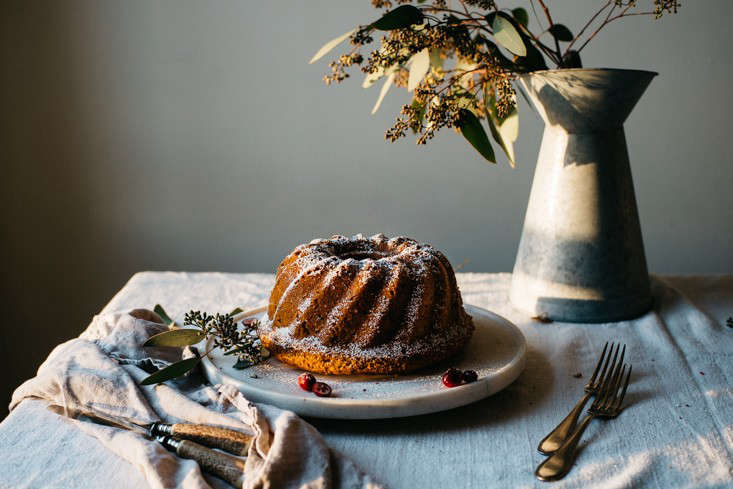I expected all cranberry bogs to look alike, and in my mind, I saw the Ocean Spray commercials; rugged farmers standing waist deep in a cranberry bog surrounded by floating red berries as far as the eye could see. What I didn’t know is that there’s another way to harvest cranberries that doesn’t involve flooding.
Dry harvesting produces the fruit that is sold fresh at farmers’ markets, roadside stands, and on grocery store shelves. Wet harvested cranberries–in which a bog is flooded and the growers churn the water with reels, loosening the berries from their vines and causing them to float to the top of the water–is used for berries bound for juice, sauce, or drying. Annie’s Crannies on Cape Cod harvests its crop using the dry method;meaning the farm stand is brimming with crates of perfect, fresh, ruby red berries.
Photography by Sarah Jagger for Gardenista.

Above: Cranberries are dry harvested by large mechanical picking machines, whose teeth comb the berries off the vine and deposit them in large burlap sacks.
Cranberries are a historic fruit, a Native American plant that has been growing in Massachusetts since before European settlers arrived. Nowadays, the state has around 14,000 acres of cranberries–95 percent of which are wet harvested. Annie Walker, owner of Annie’s Crannies, is continuing the tradition of growing cranberries using the dry harvesting method, which her family has been doing since they landed with the Mayflower in 1620. Annie grows the Howes variety, which was cross pollinated and cultivated in 1843 in East Dennis, MA, just down the way from her farm.

Above: Annie left a career as a Broadway production wardrobe supervisor, (aka costumer), to return to Cape Cod and buy the land that once belonged to her grandfather, Ben Walker, a cranberry farmer. When the cranberry market plummeted in the 1930s he was forced to sell, and it can only be described as “meant to be” that the land is now back in the family. Annie’s Crannies was founded in 1994.

Above: As if farming weren’t challenging enough, dry harvesting cranberries provides a specific challenge because a bog must be completely dry in order to harvest the fruit. Not even the slightest bit of dew or frost is acceptable when harvest time comes. (This gives me a whole new appreciation for those cartons of cranberries I come across at our farmers’ market.)

Above: Dry harvested cranberries are the absolute freshest, most unblemished cranberries you can get. Wet harvested berries, which can get a bit banged up in the harvesting process, are ideal for juicing and drying.

Above: In addition to cranberries, Annie’s Crannies also offers a variety of products, including jams and soaps, and perhaps most notably, beeswax candles and honey harvested from the farm’s more than 40 hives. The farm is USDA Good Agriculture Practices (GAP) certified and an Integrated Pest Management (IPM) farm, which means the land is tended and cultivated in a way that allows wildlife to flourish.
Feeling farm friendly? For more inspiration, see:
- Obercreek Farm and the Perfect Calendula Oil
- Local Flowers from Robin Hill Farm in RI
- A Modern Farmer and Her 10 Acres in Australia









Have a Question or Comment About This Post?
Join the conversation